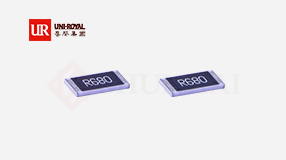Sampling resistance is an important component for current sampling and voltage feedback. Electrical parameters such as accuracy and stability directly affect the accuracy of current sampling, and then affect the performance of battery system. Sampling resistance is a current limiting element, after access to the circuit, the resistance value of the sampling resistance is fixed, generally two pins, can change the current in the circuit. The resistance value of the sampling resistance cannot be changed, and the sampling resistance generally plays the role of voltage division and shunt in the circuit.
The principle of sampling resistance is based on Ohm's law R=U/I, where R is the resistance value, U is the voltage at both ends of the resistance, and I is the current flowing through the resistance. In simple terms, the sampling resistance is measured by the voltage at both ends of the resistance, and then divided by the resistance value of the current. The smaller the resistance value of the sampling resistor, the smaller the power consumption, and the larger the current range that can be measured. However, most sampling resistors do not use resistors with very small resistance values (such as 1Ω and below), because in products such as switching power supplies, the higher the switching frequency, the smaller the resistance, the stronger the capacitance effect, and the easier it is to interfere with current sampling. The accuracy of the sampling resistance is required to be high, because the larger the resistance value of the sampling resistance, the greater the error of the sampled data, and the high-precision sampling resistance can ensure the accuracy of voltage/current monitoring. In addition, the sampling resistance also needs to consider the influence of the temperature coefficient, because the temperature change will lead to a change in the resistance value, thus affecting the sampling accuracy.
In practical applications, the selection of sampling resistance needs to be determined according to specific application scenarios and requirements, for example, in the battery management system, the charge and discharge current and voltage of the battery need to be monitored in real time to ensure the safety and stability of the battery. In this case, it is necessary to select a high-precision sampling resistance to achieve accurate current and voltage sampling. At the same time, it is also necessary to consider the power consumption and heat dissipation performance of the sampling resistor.





